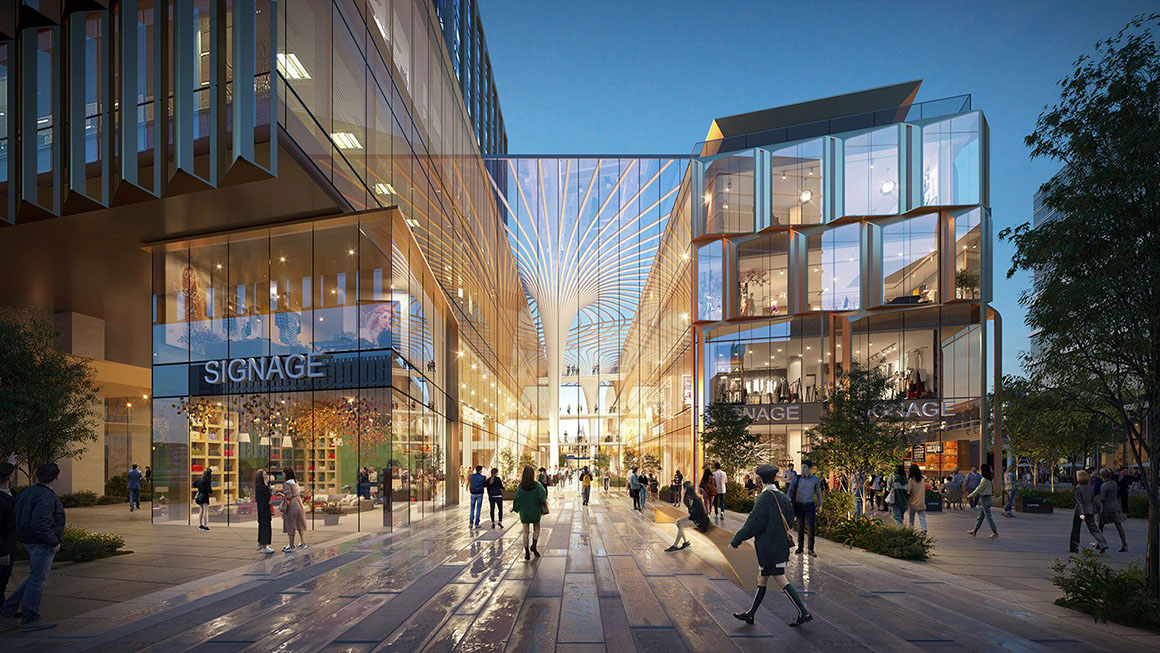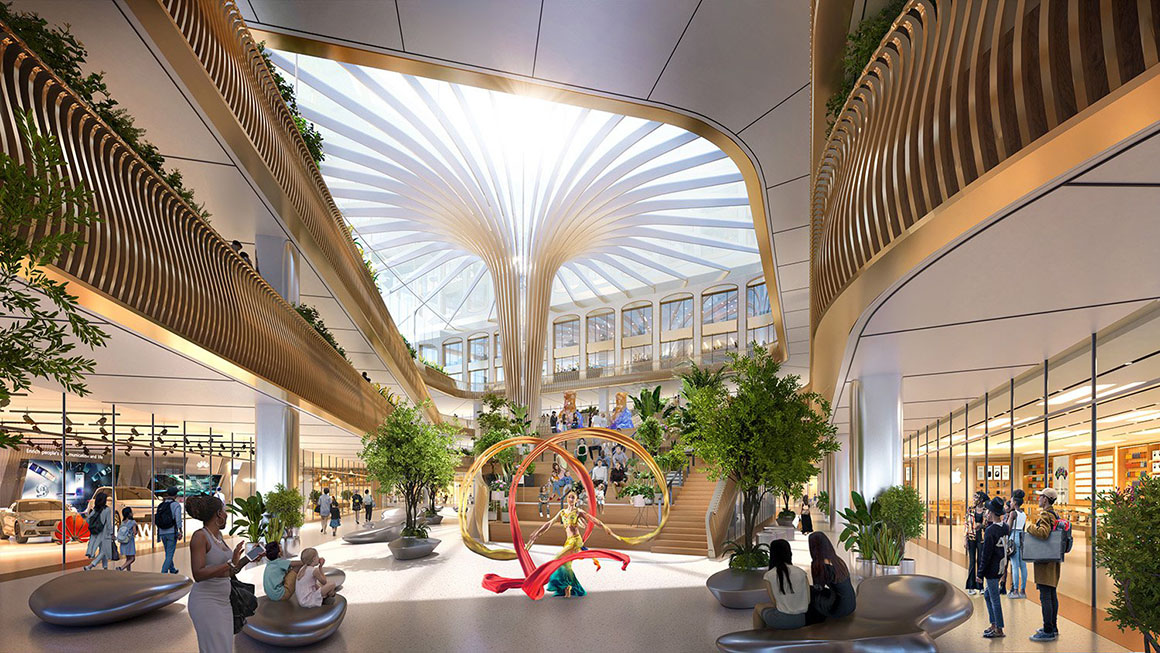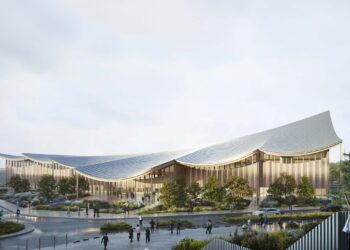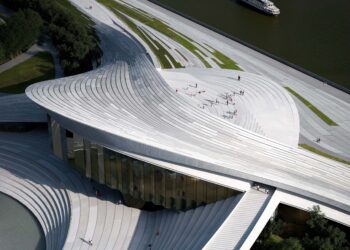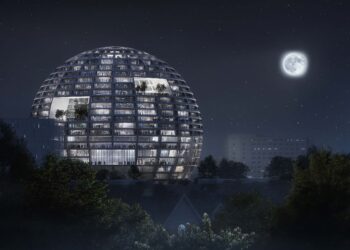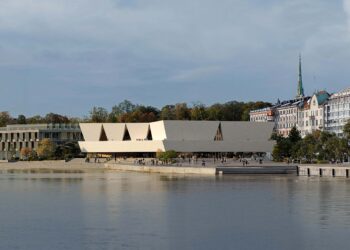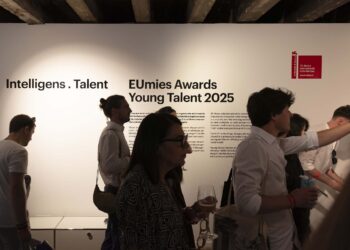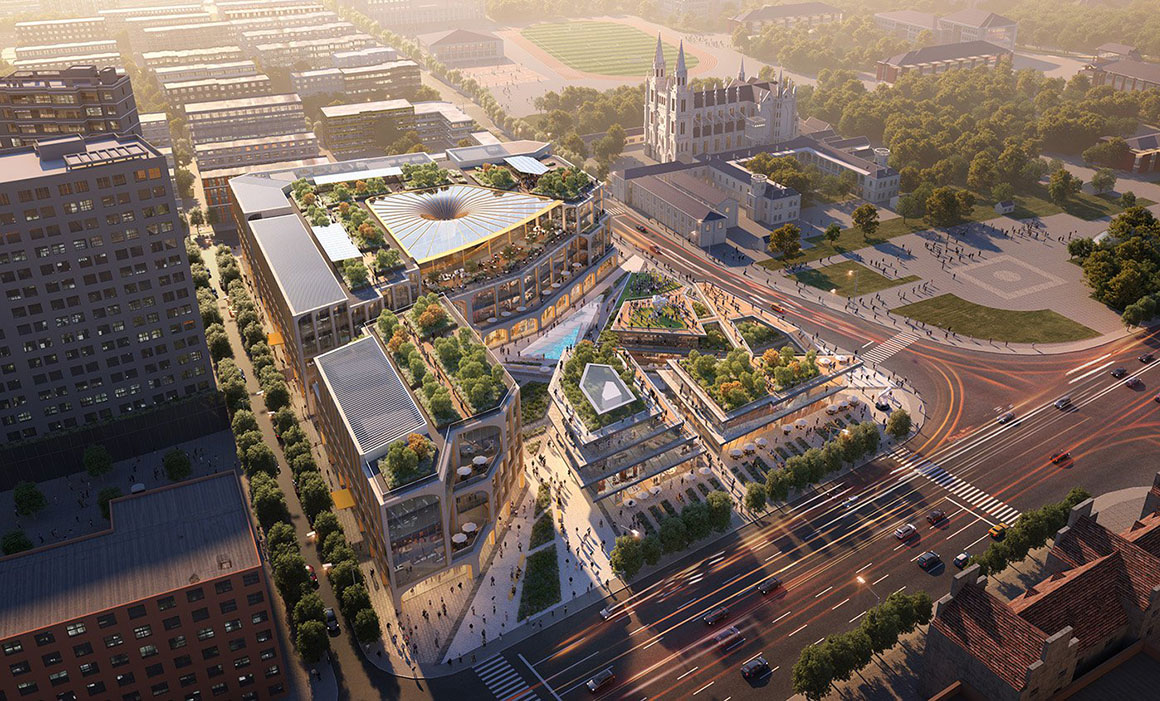
Goettsch Partners has won a design competition for a new city development project in Jinan, China. Situated adjacent to Honglou Plaza, which hosts one of the oldest cathedrals in the area, the project site spans an area of 111,500m² across three parcels in the city center. The competition focused on activating the plaza area through pedestrian-centered design, aiming to create connected public spaces linked to the existing underground transportation network. The program includes retail facilities, accommodations, a transportation hub, office spaces, and cultural amenities.
The architectural design of the complex draws inspiration from the soaring vaults and elegant archways found in the neighboring cathedral. Reinterpreted in a contemporary manner, the geometric structures create a sense of unity and rhythm through repetition. Constructed primarily from local limestone, the buildings across the three parcels feature cohesive elements that unify the overall design. Two large spaces within the complex, named the ‘Lotus Atrium’ and ‘Lotus Gallery,’ embody the innovative spirit of the local culture, incorporating design elements inspired by the iconic lotus flower symbolic of the city.
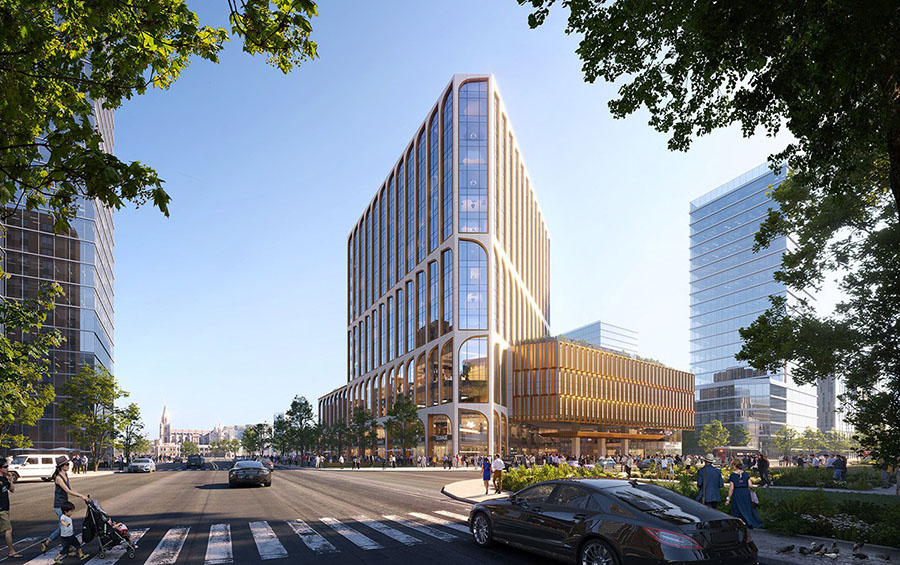
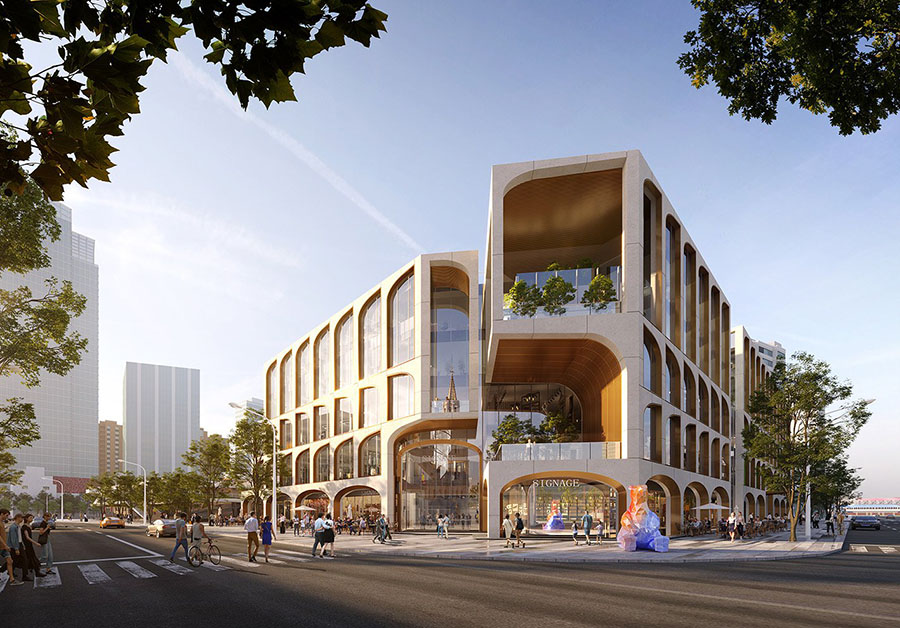
The three buildings are arranged in a stepped manner towards Honglou Plaza and the new central square, creating a multilevel space for vibrant activities. Terraced corridors along the spaces offer views of the city while also highlighting the historical context of the area by overlooking the old cathedral. The distribution of retail and service spaces on the lower levels and office and cultural spaces on the upper levels is expected to generate new synergies. The three sunken plazas provide direct access to the subway station, extending the pedestrian-centric nature of the area.
Paul De Santis, co-design director at Goettsch Partners, said, “We believe that a successful proposal must be respectful of the rich architectural context found at Honglou Plaza. The new complex reinterprets elements of the local culture in a contemporary manner, ensuring that the architecture is unique yet cohesive with its surroundings.”
